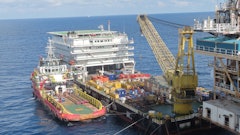
Supply chains are threatened every day from events related to natural disasters—fires, floods, power outages, contamination, road closures—to socio-economic issues, such as geopolitical upheavels, terrorism and labor unrest. These incidents are not a work of science fiction and the number of them that can negatively affect the supply chain are real and virtually limitless.
These are examples of unexpected risk events, which tend to occur with little warning but have a limited duration. Another type of risk is systematic risk. For any given product, factors such as sources of supply, routes, modes of transportation, carriers, and contractors provide a unique risk profile. Risk events layer on top of systematic risk and may be more difficult to control or predict.
Global supply chains tend to have increased levels of systematic and unexpected risk due the fact that they are longer and cross borders and geographies. Sometimes there are advance warnings that an event may happen that will cause a disruption in your supply chain; sometimes not. Some events are highly unlikely ever to occur; others are probably just a matter of time. The severity of impact might affect only a small part of your plant or distribution operation—or your entire business.
Understanding and assessing systematic risk can be a challenge, especially when hundreds or thousands of products are in scope. But, unexpected risk management systems can associate events as they occur to specific plants, lanes, orders or shipments to help you understand the impact (or non-impact) on your operations. End-to-end visibility, reality checks and risk management let you monitor and adjust your supply chains in real-time.
End-to-End Visibility
Knowing inventory levels inside your company is not enough. To understand and manage risk you need to visualize the supply chain from raw material orders through delivery to end customer. Supply chain visibility enables faster response to disruptions and proactively correct vulnerabilities. Ad hoc strategies, such as building up and drawing down inventory stockpiles, are poor substitutes for complete visibility. Visibility can enable managerial control, and is predicated on accurate data from all parties in the supply chain.
Reality Check
Every order placed with a supplier or received from a customer has a probability of being delivered on-time and in full (OTIF). For example, your supply chain for a given product to a given customer location may support five days from order capture to delivery. If the order comes in with four-day lead time, is on-time time delivery feasible? What are the odds the express carrier will deliver on time? Using historic data to indicate that a specific order has a 60 percent chance of being OTIF lets you drive continuous improvement. Instantaneous numeric assessments of supply chain reality increase supply chain performance and reduce systemic risk.
Risk Management
Plant explosions, strikes and weather are examples of risk events that can throw a strong supply chain into a risk management situation. For example, a container ship that just left Los Angeles harbor may not be impacted by a strike there, but a ship scheduled to leave the next day is likely affected. Risk management needs to consider not only the carriers, locations and products, but also the relation of the risk event to the supply chain event.
Business Network
End-to-end visibility, reality checks and risk management are all tools to mitigate risk. For global supply chains these need to be built on a business network of data from all supply chain participants, including customers, distributors, logistics providers, manufacturers and raw material suppliers. This consolidated data can be reported upon and visualized to allow business leaders and executives to understand what is happening. In addition, Bayesian estimating techniques can be applied to this supply chain data in real-time to predict what will happen and alert the appropriate people to act. And, real-time monitoring can assess world events and apply them to supply chains in real-time to help you understand which orders or locations will be impacted and which will not.
End-to-end supply chain visibility helps companies recognize what’s working, what’s not, what needs to be tweaked, and what needs to be changed completely. The larger the company, the more likely its business functions are to become isolated in silos. To improve processes and achieve desired outcomes, collaboration and data sharing are critical across suppliers, providers and business functions. Visibility breeds actionable information buried deep within supply chain processes. Success requires more than analytics and optimization; business-savvy partners drive top performance.
A business network helps supply chain leaders prepare for and avoid disruptions by providing visibility to all real-time events. Knowing what is going on from end-to-end helps you to quickly find another supplier of raw materials if your supplier can’t meet your demand; fosters collaboration among trading partners for consolidated loads for lower transportation costs; and provides insights into events for faster, more informed decisions that can mitigate risk. The more tightly knit your community is on the network, the easier it is to avoid or recover from a disaster. Today’s businesses should be sharing risk mitigation strategies and back-up plans with their trading partners to build a true ecosystem that is poised for continuing business, no matter what.




















